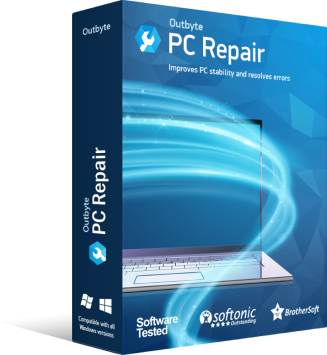Repair Utility
- File name: pc-repair-setup.exe
- Tool''s Developer: Outbyte
- Certified by: Symantec
- Download Size: 24 MB
- Downloaded: 1,143,473 times
-
Rating:

 Start Download
Start Download
Windows Operating Systems



Driver for 802.11n Wi-Fi Adapter
Wireless connectivity has become a cornerstone of modern computing, and the 802.11n Wi-Fi standard remains a popular choice for many users due to its balance of speed and compatibility. However, issues with the driver for an 802.11n Wi-Fi adapter can disrupt your internet experience, leading to frustrating drops in connectivity, slow speeds, or even complete failure to detect networks. Understanding the root causes of these driver-related problems and knowing how to resolve them is essential for maintaining seamless wireless performance.
Causes of Driver Issues for 802.11n Wi-Fi AdaptersDriver problems for 802.11n adapters often stem from a combination of software, hardware, and compatibility factors. Below are the most common causes:
- Outdated or Incompatible Drivers
Drivers act as translators between your hardware and operating system (OS). Over time, operating systems receive updates that may render older drivers incompatible. If your 802.11n adapter’s driver hasn’t been updated to align with your OS version, connectivity issues like frequent disconnections or failure to detect networks may occur.
- Corrupted Driver Files
Driver files can become corrupted due to improper installations, sudden system shutdowns, or malware. A corrupted driver may cause the adapter to malfunction, resulting in error messages such as “Driver unavailable” or “No Wi-Fi networks found.”
- Operating System Updates
Windows, macOS, or Linux updates sometimes introduce changes that conflict with existing drivers. For instance, a Windows 10 or 11 update might deprecate older driver versions, leaving your 802.11n adapter unsupported until a new driver is installed.
- Hardware Conflicts
If your system has multiple network adapters (e.g., a built-in Wi-Fi card and a USB adapter), driver conflicts can arise. Additionally, faulty hardware—like a damaged adapter or USB port—can mimic driver issues, making troubleshooting more complex.
- Third-Party Software Interference
Antivirus programs, firewalls, or VPNs may interfere with driver operations. Overly aggressive security software might block driver installations or restrict the adapter’s functionality.
Resolving driver-related problems for your 802.11n Wi-Fi adapter requires systematic troubleshooting. Follow these steps to restore connectivity:
- Verify the Current Driver Status
- Open
Device Manageron Windows (pressWin + Xand select it from the menu). - Expand the Network Adapters section.
- Locate your 802.11n adapter. If it has a yellow exclamation mark, the driver is faulty or missing.
- Open
- Update the Driver
- Right-click the adapter in Device Manager and select Update Driver.
- Choose Search automatically for drivers to let Windows find the latest version.
- If Windows doesn’t find a driver, visit the manufacturer’s website (e.g., Intel, TP-Link, or Netgear) and download the driver manually. Ensure you select the version compatible with your OS.
- Roll Back to a Previous Driver (If Updates Fail)
- If the issue began after a recent driver update, roll back to the older version.
- In Device Manager, right-click the adapter, select Properties, go to the Driver tab, and click Roll Back Driver.
- Perform a Clean Driver Installation
- Uninstall the current driver via Device Manager (right-click > Uninstall Device).
- Restart your computer. Windows will attempt to reinstall the driver automatically.
- Alternatively, install the driver manually from the manufacturer’s website after uninstalling.
- Check for OS Updates
- Ensure your operating system is up to date. On Windows, go to Settings > Update & Security > Check for Updates.
- OS updates often include patches for driver compatibility issues.
- Disable Conflicting Software
- Temporarily disable antivirus tools, firewalls, or VPNs to test if they’re causing the problem.
- Re-enable them one by one to identify the culprit.
- Test Hardware Functionality
- Try connecting the 802.11n adapter to another USB port or computer.
- If it fails to work on multiple devices, the hardware itself may be faulty and require replacement.
- Adjust Power Management Settings
- In Device Manager, right-click the adapter, select Properties, and navigate to the Power Management tab.
- Uncheck Allow the computer to turn off this device to save power to prevent unexpected disconnections.
Driver issues for 802.11n Wi-Fi adapters are often solvable with a combination of software updates, careful troubleshooting, and occasional hardware checks. While the 802.11n standard is older compared to Wi-Fi 6 or 6E, it remains a reliable option for many users—provided the drivers are properly maintained. Proactive measures like regularly checking for driver updates, avoiding untrusted software sources, and monitoring OS compatibility can prevent most problems. If persistent issues arise despite following these steps, consider upgrading to a newer adapter that supports modern standards, as hardware limitations may eventually outweigh the benefits of troubleshooting older devices. By understanding the causes and solutions outlined in this guide, you can ensure your 802.11n Wi-Fi adapter continues to deliver stable, high-performance connectivity for years to come.
|
Learn how to reset your Epson L3150 printer and access official firmware downloads and tools. This guide provides step-by-step instructions to troubleshoot common issues, restore factory settings, and ensure your device operates smoothly. Discover trusted sources for firmware updates, essential software, and tips to avoid errors during the process. Perfect for users seeking to maintain printer performance or resolve technical glitches efficiently.
|
|
Unlock the full potential of Android Debug Bridge (ADB) with expert-level tips and tricks. Discover advanced commands, automation shortcuts, and hidden features to streamline app testing, debug complex issues, and supercharge your Android development workflow. Learn wireless debugging, logcat mastery, and app control hacks for peak efficiency.
|
|
**Step-by-Step Guide to Installing Epson L3250 Wi-Fi Printer** 1. **Unbox & Setup**: Remove packaging, install ink cartridges, and power on the printer. Select your language on the screen. 2. **Connect to Wi-Fi**: Press the Wi-Fi button on the control panel. Navigate to network settings, choose your Wi-Fi, and enter the password. 3. **Install Software**: Download the Epson driver from the official website (or use the included CD). Run the installer and select Wireless Connection when prompted. 4. **Complete Setup**: Follow on-screen instructions to finalize installation. Test print a page to confirm connectivity. Troubleshooting tip
|
|
Need a Bluetooth driver for Windows 10? Get secure, official download links here for hassle-free installation. Ensure seamless device connectivity with trusted drivers, step-by-step guides, and automatic setup tips. Fix pairing issues fast!
|
|
Transform your everyday photos into stunning visual stories with Snap Camera. Explore a world of filters, effects, and lenses designed to amplify your unique style. Whether you’re streaming, video calling, or capturing memories, every shot becomes a canvas for your imagination. Elevate your creativity—one click at a time.
|
|
Struggling with Bluetooth problems on Windows 11? Learn quick, step-by-step solutions to resolve driver issues—from updating drivers and using built-in troubleshooters to manual fixes. Get your devices connected smoothly again with this easy-to-follow guide.
|
|
Encountering an Unknown USB Device: Device Descriptor Request Failure error? This issue often arises when a connected USB device isn’t properly recognized by your computer, due to corrupted drivers, faulty hardware, or connection problems. Learn how to troubleshoot driver updates, port checks, and device resets to resolve this frustrating connectivity glitch.
|
|
Ensure seamless connectivity and optimal performance for your 802.11n Wi-Fi adapter with the latest driver. This essential software enhances compatibility, boosts wireless speeds, and resolves connectivity issues, keeping your device running smoothly on modern networks. Install to unlock stable, high-speed internet access and maximize your adapter’s capabilities.
|
|
The IDT High Definition Audio Codec delivers premium sound quality, offering crystal-clear audio reproduction for immersive listening experiences. Leveraging advanced signal processing and low-distortion technology, it ensures rich, detailed acoustics across music, gaming, and multimedia. Compatible with a wide range of devices, this codec elevates audio performance for audiophiles and professionals seeking studio-grade fidelity.
|
|
Realtek HD Audio Drivers ensure optimal sound performance for your PC, delivering high-definition audio quality and compatibility with Windows systems. These drivers support advanced features like noise suppression, speaker configuration, and immersive effects for headphones, enhancing music, gaming, and multimedia experiences. Regularly updated for stability and device compatibility.
|
| See all queries |



